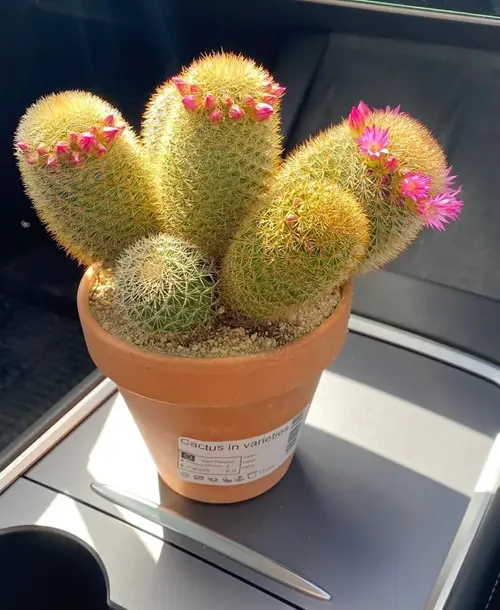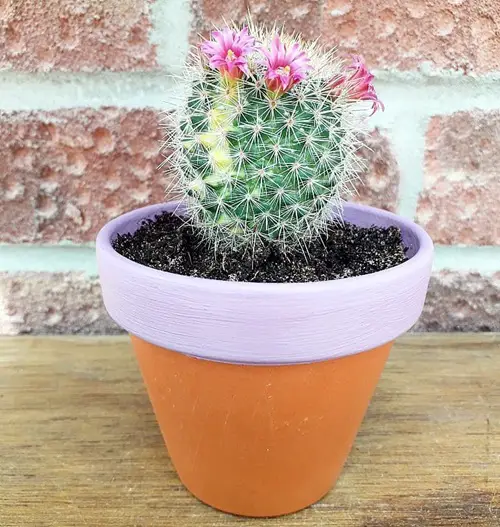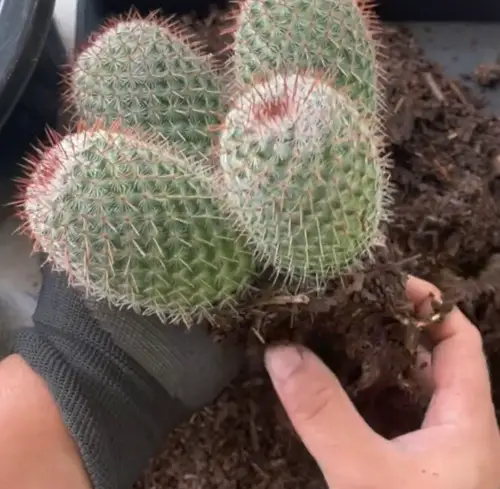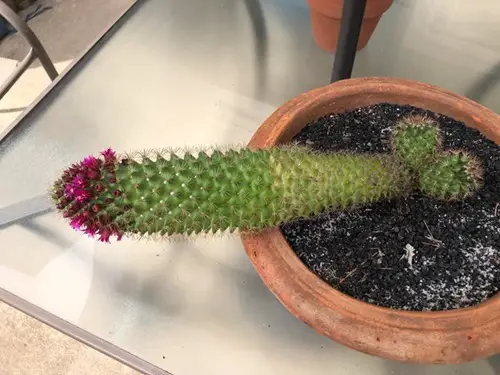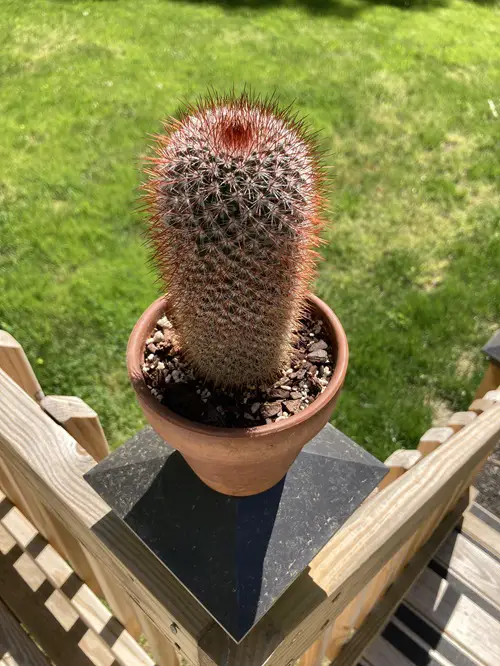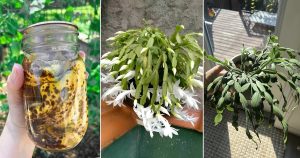Follow this simple guide to learn how to transplant a spiny Pincushion cactus carefully without poking yourself!
Pincushion cacti belong to the Mammillaria genus and are from arid regions of North and Central America. These small, spiky plants are deeply admired for their spherical shape and attractive flowers. If you want to grow them in your garden then here is the process of how to transplant a Spiny Pincushion cactus.
What is the Best Time to Transplant?
The best time to transplant a pincushion cactus is during the spring or early summer, just before its active growth period. In their native habitats, pincushion cacti experience a period of dormancy during the winter months when their growth slows down. Transplanting during this dormant phase can stress the plant and hinder its ability to adapt.
How to Transplant Spiny Pincushion Cactus?
1. The Right location
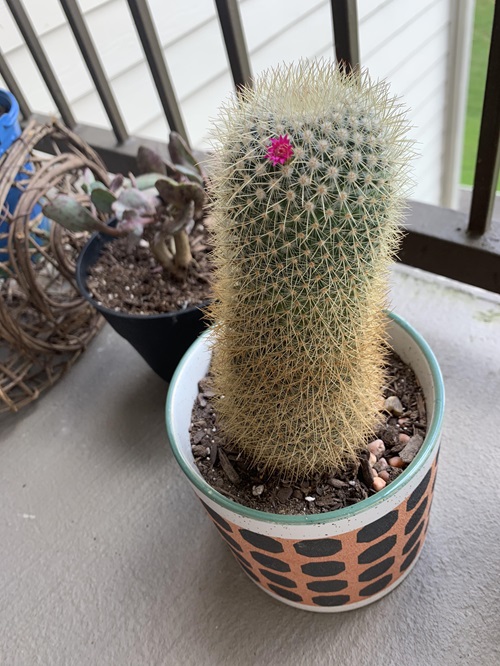
Before doing anything, first select a good location for your plant. It should be dry, and well-lit with an adequate amount of sunlight. If you’re growing it outdoors then you can plant it anywhere if the sun rays reach there every day otherwise, they do not prefer to thrive in too much shade or dark places.
Again, while placing indoors a beautiful sunny side windowsill will always be the best place.
2. Prepare the Soil
Prepare a good succulent potting mix that is also porous enough to drain out excess water quickly. For this use equal amounts of sandy soil, small pebbles, or perlite, along with some coco peat and husk for a balanced mix. Fill the new poot with this medium and spray water sparingly to make it moist so that everything settles down nicely.
3. Water Before Transplanting
Water it thoroughly a few days before the day you plan to transplant. This technique helps the roots to stay hydrated and lessen the stress during transplantation.
4. Protect Yourself
Wear a pair of thick gardening gloves and prepare a separate platform with old newspapers or cloth on a surface while you handle this spiky cactus. Because it has numerous hair-like sharp spines all over it that cause a certain level of discomfort if your skin comes in contact with it.
5. Prepare the Cactus
The location, soil, and precautionary measures are set, so, now you are ready to uproot the cactus from its old pot. Gently dig around it with the help of a trowel and carefully lift it. During this time check the roots for any sign of damage or infestations. If there are any damaged or infected roots, snip them off with a sterile cutter.
You can also separate the offsets from the mother plant in this step if you want to propagate some. Just be cautious and untangle the root-bound and if required use a cutter to separate some offsets making sure that the plants aren’t hurt and the roots are perfectly fine.
6. Plant it in a New Pot
Now, bring in the new home for your babies! Make a hole in the new pot that you have prepared earlier and gently lay down the plant in a way that the base is covered properly to hold it sturdy. You can also dab a little around the base to even out the soil uniformly.
7. Watering
You can use a spray bottle for this because your soil is already moist. Spray a little water and let the soil settle in nice and firm. This helps to make the plant sturdy and get a nice grip in its new home while allowing initial hydration for further growth and development.
8. Keep In Shade
Now it is time for your plant to release the stress and rejuvenate! Do not take them out under the sunlight immediately because this is the time they will need to adjust to their new growing medium and also revive from the transplantation stress. So, keep them under dappled sunlight or a partially shaded location for 3-4 days or a week.
9. Introduce Sunlight
Keep a nice check on them if there are any signs of damage. If everything seems fine then bring them out and introduce them back to their favorite sunny spot! Now they will try to acclimatize to the new lighting conditions as well so give them some time for over 3-4 weeks in their location.
However, avoid afternoon sunlight exposure because it is too harsh and might cause issues like sunburns or so. Spots like a south-facing window or a bright balcony will be good for the initial days.
10. Look Out for Pests
Pests and diseases are always around so as a plant parent it should be a routine for you to keep an eye on your garden. Because the earlier you observe the faster you can stop them from causing the damage. So, for Pincushion cacti look out for gnats, which can cause overwatering, and spider mites that are found mostly indoors.
So are you ready for some transplanting now? But before starting, remember to protect yourself by wearing thick gloves. Also, let us know how your transplantation session goes!

